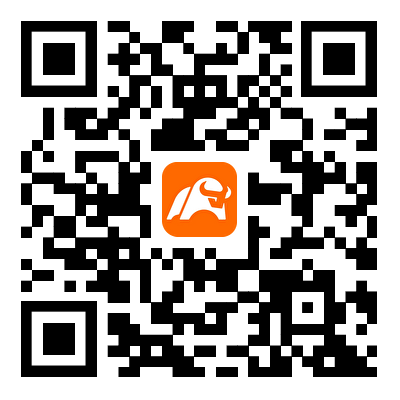NASA has selected Elon Musk's SpaceX to provide launch services for a rotorcraft lander mission aimed at exploring the largest moon of the planet Saturn in July 2028
What Happened: The deal is priced at about $256.6 million, including launch services and other related costs.
The mission is expected to fly in the period from July 5 to July 25, 2028, on a SpaceX Falcon Heavy rocket from Florida to explore the moon called Titan.
 "Dragonfly centers on novel approach to planetary exploration, employing a rotorcraft-lander to travel between and sample diverse sites on Saturn's largest moon," NASA said in a statement.
"Dragonfly centers on novel approach to planetary exploration, employing a rotorcraft-lander to travel between and sample diverse sites on Saturn's largest moon," NASA said in a statement.
The mission is aimed at identifying the habitability of Titan's environment and searching for chemical indications of whether water-based or hydrocarbon-based life once existed on Saturn's moon, among other goals.
Why It Matters: SpaceX has multiple contracts with NASA to fly astronauts and cargo to the International Space Station (ISS) and also to bring down the space station upon its retirement around 2030.
NASA is also relying on a particular version of SpaceX's Starship launch vehicle called the Human Landing System or HLS to enable astronauts to land back on the surface of the Moon for the first time since 1972.
During the Artemis 3 mission, slated for no earlier than September 2026, the Starship HLS will be launched first and it will wait for NASA's Orion spacecraft in lunar orbit after filling its tanks in space. Once the Orion spacecraft arrives, the HLS will dock with it. Two of the four crew members on the mission will transfer from Orion to Starship and descend to the surface of the moon.
The last time humans set foot on the Moon was in 1972 with Apollo 17. Since then, no crew has traveled beyond low-Earth orbit.
While SpaceX is not yet listed on the exchanges, investors can leverage Destiny Tech100 Inc. (NYSE:DXYZ) and Cathie Wood's Ark Venture Fund (NASDAQ:ARKVX) to participate in the Musk-led space company's growth.
Check out more of Benzinga's Future Of Mobility coverage by following this link.
- BYD Makes A Million NEVs In Less Than 2 Months After Beating Tesla For The First Time Since 2022 In Quarterly Revenue
Photo courtesy: NASA
NASAは、2028年7月に土星の最大の月を探査するための回転翼着陸機ミッションのために、エロン・マスクのSpaceXを選定しました。
何が起こったのか:この契約は約25660万ドルで、打ち上げサービスおよびその他関連コストを含んでいます。
このミッションは、2028年7月5日から7月25日までの期間に、フロリダからSpaceXのファルコンヘビー ローンチヴィークルを使って、タイタンと呼ばれる月を探査することが期待されています。
 "ドラゴンフライは、土星の最大の月上にある多様な地点を移動してサンプリングするために、回転翼着陸機を使用して惑星探査への新しいアプローチに焦点を当てています。"とNASAは声明を発表しました。
"ドラゴンフライは、土星の最大の月上にある多様な地点を移動してサンプリングするために、回転翼着陸機を使用して惑星探査への新しいアプローチに焦点を当てています。"とNASAは声明を発表しました。
このミッションは、タイタンの環境が居住可能かどうかを特定し、土星の月に水ベースまたは炭化水素ベースの生命がかつて存在していたかどうかの化学的な兆候を探すことを目的としています。
重要な理由:SpaceXは、宇宙飛行士と貨物を国際宇宙ステーション(ISS)に運ぶためにNASAと複数の契約を結んでおり、また2030年頃に宇宙ステーションが退役する際にそれを地上に戻すことも約束しています。
NASAは、1972年以来初めて宇宙飛行士が月面に着陸するために、SpaceXのスターホップ ローンチヴィークルの特定のバージョン、すなわち人員着陸システム(HLS)に依存しています。
アルテミス3ミッションは、早くても2026年9月に予定されており、最初にスターホップ HLSが発射され、宇宙でタンクを満たした後、月周回軌道でNASAのオリオン宇宙船を待機します。オリオン宇宙船が到着すると、HLSはそれとドッキングします。ミッションの4人の乗組員のうち2人がオリオンからスターホップに移り、月の表面に降下します。
人類が月に最後に足を踏み入れたのは1972年のアポロ17号でした。それ以来、クルーは低軌道を超えて旅行したことはありません。
SpaceXはまだ取引所に上場していませんが、投資家はDestiny Tech100 Inc. (NYSE:DXYZ)とキャシー・ウッドのArk Venture Fund (ナスダック:ARKVX)を活用して、マスクが率いる宇宙企業の成長に参加できます。
ベンジンガのモビリティの未来に関するカバレッジの詳細をこのリンクからご覧ください。
- BYDが2022年以降初めてテスラを超えた四半期の売上高の後、わずか2か月で100万台のNEVを生産
写真提供:NASA
 "ドラゴンフライは、土星の最大の月上にある多様な地点を移動してサンプリングするために、回転翼着陸機を使用して惑星探査への新しいアプローチに焦点を当てています。"とNASAは声明を発表しました。
"ドラゴンフライは、土星の最大の月上にある多様な地点を移動してサンプリングするために、回転翼着陸機を使用して惑星探査への新しいアプローチに焦点を当てています。"とNASAは声明を発表しました。

 "Dragonfly centers on novel approach to planetary exploration, employing a rotorcraft-lander to travel between and sample diverse sites on Saturn's largest moon," NASA said in a statement.
"Dragonfly centers on novel approach to planetary exploration, employing a rotorcraft-lander to travel between and sample diverse sites on Saturn's largest moon," NASA said in a statement.